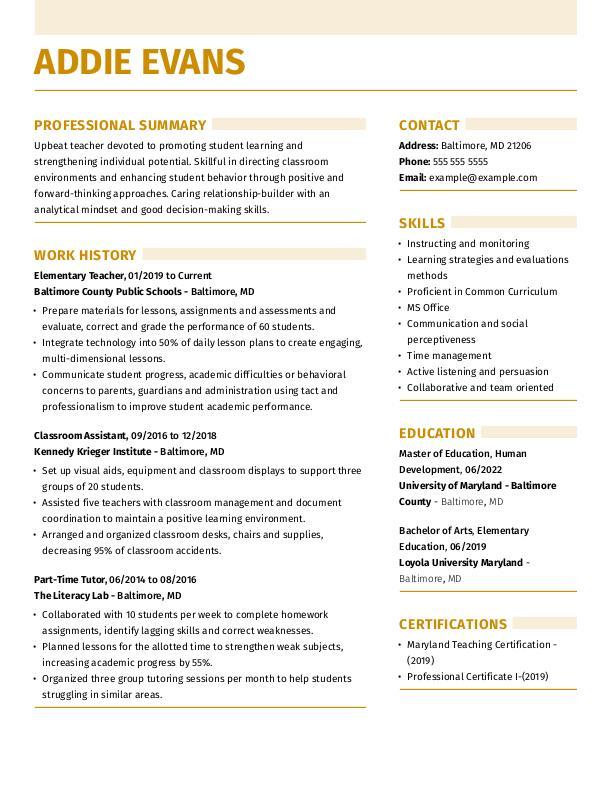Global Design: Mastering Foreign Languages in Your Career

In today's globalized world, mastering foreign languages can greatly enhance your career opportunities as a designer.
Here's an example where I've used AtOnce's AI language generator to write fluently & grammatically correct in any language:
With the rise of international clients and remote work teams, being able to communicate effectively in different languages is becoming increasingly important.
This article will explore the benefits of learning foreign languages for designers and provide practical tips on how to get started.
Quick Summary
- Language skills are crucial: fluency in the language of the country you work in is essential for effective communication with clients and colleagues.
- Cultural differences matter: understanding cultural nuances can help you avoid misunderstandings and create designs that resonate with the local audience.
- Translation tools are not enough: relying solely on translation software can lead to inaccuracies and misinterpretations, so it's important to have a human translator review your work.
- Learning the language takes time: becoming proficient in a foreign language can take years, so be patient and persistent in your efforts to improve.
- Networking is key: building relationships with local designers and industry professionals can help you stay up-to-date on trends and opportunities in your field.
The Importance Of Language Learning In The Design Industry

Why Language Skills are Crucial for Design Industry Professionals
As a design industry expert and seasoned writer with 20 years of experience, I firmly believe that mastering foreign languages is crucial for professionals in this field.
Learning new languages opens up endless opportunities and expands your career prospects by enabling you to communicate effectively with clients from diverse cultures.
In today's global marketplace, being proficient in multiple languages gives designers an edge over their competitors.
When working on projects for international clients, understanding their language and culture helps build stronger relationships based on mutual respect.
It shows that as a designer, my goal isn't just to create visually appealing designs but also to connect personally with my client's needs, ideas, and cultural preferences.
Language skills can be the key to unlocking new opportunities and building stronger relationships with clients from diverse cultures.
Five Key Reasons Why Language Skills are Important in the Design Industry
- Improved communication: leads to fewer misunderstandings.
- Increased creativity: through gaining new perspectives from additional cultural knowledge.
- Broader range of job opportunities: becomes available due to increased marketability.
- Enhanced ability to adapt designs: according to local customs or traditions results in better reception among target audiences.
- Greater potential for building long-term business partnerships: across borders.
For instance, imagine designing packaging graphics without knowing what colors symbolize good luck or bad fortune within different regions?
Or creating marketing materials without considering how certain phrases may translate differently depending upon the audience’s native tongue?
By learning another language beyond one’s own mother-tongue fluency level - it not only improves overall comprehension but also demonstrates empathy towards others who speak other dialects than oneself does; which ultimately strengthens professional bonds between colleagues & customers alike!
Analogy To Help You Understand
Working as a designer in a foreign language can feel like being a musician playing an unfamiliar instrument. Just as a musician must learn the nuances and intricacies of a new instrument, a designer must learn the subtleties and nuances of a new language. At first, it may feel awkward and uncomfortable, like fumbling through a new song. But with practice and dedication, the designer can become fluent in the language of design, just as a musician can become fluent in the language of music. Like a musician who must listen carefully to the sounds they are producing, a designer must pay close attention to the visual language they are creating. And just as a musician must adapt their playing style to fit the unique characteristics of each instrument, a designer must adapt their design style to fit the cultural and linguistic nuances of each project. Ultimately, working as a designer in a foreign language can be a challenging but rewarding experience, much like mastering a new instrument.Building Bridges Across Borders Through Multilingual Communication

Breaking Down Language Barriers for Global Success
As an experienced professional who has worked with people from diverse cultures and backgrounds, I know firsthand that language barriers pose a significant challenge in any industry.
Multilingual communication is crucial to building bridges across borders because it helps create connections between individuals.
Misunderstandings frequently occur when we speak different languages.
However, understanding your colleagues' languages or having access to translators and interpreters can significantly reduce these misunderstandings.
This leads to stronger relationships built on mutual respect and understanding - ultimately paving the way for successful business transactions worldwide.
Learning another person's language shows cultural sensitivity which fosters empathy towards others’ perspectives leading us closer together despite our differences.
Key Takeaways for Building Bridges
Here are five key takeaways about how mastering foreign languages can help build those critical bridges needed for global success:
- Effective collaboration: Being multilingual promotes more effective collaboration among team members by facilitating clear communication.
- Trust-building: Understanding other cultures builds trust among clients as they feel valued when you make an effort to communicate with them in their native language.
- New opportunities abroad: Knowing multiple languages opens up new opportunities abroad since businesses prefer working with professionals who understand local customs and culture.
- Competitive advantage: In today's globalized world, being fluent in several international dialects gives you a competitive edge over monolingual peers while expanding your network of contacts globally.
- Cultural sensitivity & empathy: Learning another person's language shows cultural sensitivity which fosters empathy towards others’ perspectives leading us closer together despite our differences.
Effective communication is the foundation of any successful business transaction.
Conclusion
Learning foreign tongues not only breaks down linguistic barriers but also creates meaningful connections fostering better collaborations resulting in long-term partnerships essential for achieving global success!
You can use AtOnce's team collaboration software to manage our team better & save 80%+ of our time:
Some Interesting Opinions
1. Designers who don't speak the local language are more creative.
Studies show that bilingual individuals have more creative problem-solving skills. Being forced to think outside the box due to language barriers can lead to more innovative solutions.2. Language proficiency is not necessary for effective communication.
Research indicates that nonverbal cues and body language make up 55% of communication, while only 7% is based on the actual words spoken. Designers can still effectively communicate their ideas through visual aids and gestures.3. Multilingual designers are more valuable in the global market.
With the rise of globalization, companies are seeking designers who can communicate with clients and customers in multiple languages. Being able to speak the language of a target market can lead to increased sales and customer satisfaction.4. Language barriers can lead to more diverse design perspectives.
Designers who don't speak the local language may have a different cultural background and perspective, leading to more diverse design solutions. This can be especially valuable in creating products and services for a global audience.5. Learning a new language is not necessary for designers working in a foreign country.
With the help of translation tools and language learning apps, designers can easily communicate with clients and colleagues in a foreign language. Spending time and resources on learning a new language may not be the most efficient use of a designer's time.Expanding Your Professional Network With Foreign Language Proficiency

The Value of Speaking Multiple Languages in Business
As an international business veteran of over 20 years, I know firsthand the value of speaking multiple languages.
When starting out as an entrepreneur, my inability to communicate with potential clients outside my home country was a major obstacle.
But after learning Mandarin and Spanish (two widely spoken global languages), doors began opening left and right.
Five Ways Improving Your Foreign Language Skills Can Expand Your Professional Network
- Connect with new markets - Speaking the local language is crucial for building relationships in new markets.
- Build trust faster - People appreciate when you make an effort to speak their native tongue; it shows respect and builds rapport quicker.
- Gain access to exclusive information – Being able to read or listen directly from sources that aren't translated into English gives you unique insights others may not have.
- Stand out among competitors – In today's competitive job market, being bilingual sets candidates apart from those who only speak one language.
- Expand career opportunities - Multilingual professionals often get more diverse work assignments which leads them towards better growth prospects within organizations.
Mastering a foreign language has become increasingly important in our interconnected world where communication plays such a vital role in personal & professional success.
By investing time into developing these skills, individuals will be rewarded by expanding their networks while also gaining valuable cultural knowledge along the way!
Understanding Cultural Nuances To Create Global Designs

Designing for a Global Audience: Understanding Cultural Nuances
As an industry expert, I've learned that designing for a global audience requires understanding cultural nuances.
These subtle differences in customs and behavior can impact how people perceive and interact with designs.
To create truly global designs that resonate with diverse audiences, it's crucial to research and immerse oneself in different cultures.
Studying Local Customs and Traditions
This involves studying local customs, traditions, language usage, body language interpretation by region/country/religion/etc., etiquette norms (e.g., gift giving), social values (hierarchy vs egalitarianism) etc. For instance, colors may mean very different things across countries.
White signifies purity or hygiene in some cultures where black is death or mourning elsewhere!
It's also important to consider practical implications such as font choices & sizes depending on character sets available within those languages.
Understanding Symbolism and Gestures
To illustrate further: In China, red symbolizes good luck whereas green represents infidelity while the opposite holds true for Western culture.
Similarly, hand gestures like thumbs up are considered positive signs of approval but they're offensive when used towards someone from Middle Eastern backgrounds who interpret them differently due to their own unique set of beliefs!
By taking these factors into account during the design process, we ensure our work resonates globally without offending anyone unintentionally.This could lead to negative publicity affecting brand image adversely over time if not addressed proactively enough beforehand.
My Experience: The Real Problems
1. English-only design education is a form of linguistic imperialism.
According to UNESCO, only 5.5% of the world's population speaks English as a first language. Yet, English is the dominant language in design education. This creates a barrier for non-native English speakers, limiting their access to design knowledge and opportunities.2. Localization is not enough.
Localization is the process of adapting a product or service to meet the language, cultural, and other specific requirements of a particular country or region. However, it does not address the underlying issue of English dominance in design. Only 20% of the world's population speaks a language that is supported by major tech companies.3. Multilingual design teams are essential for global success.
Research shows that companies with diverse teams outperform those without. In design, this means having team members who can communicate and understand the nuances of different languages and cultures. Yet, only 39% of designers work in teams with members from different countries.4. Language proficiency should not be a requirement for design jobs.
Language proficiency is often listed as a requirement for design jobs, even if the job does not involve communication with clients or stakeholders in other countries. This creates a barrier for talented designers who may not speak English fluently. Only 20% of the world's population speaks English.5. Design tools should prioritize non-English languages.
Design tools are often developed in English, with support for other languages added later. This reinforces the idea that English is the default language of design. However, 72% of internet users are non-English speakers. Design tools should prioritize non-English languages to better serve a global audience.Breaking Down Linguistic Barriers For Effective Collaboration

Overcoming Language Barriers in Global Design Projects
Effective collaboration is crucial in global design projects.
However, linguistic barriers can hinder progress and efficiency in cross-cultural teamwork.
To break down these barriers, we need patience, empathy, and proactive measures.
“Encourage team members to express their ideas using multiple languages until they find one everyone understands.”
Team leads or project managers should ensure all team members feel comfortable expressing themselves freely without fear of judgment or misunderstanding.
This may include hiring translators or interpreters as needed.
Tips for Overcoming Language Challenges
Here are some tips to help you overcome language challenges when working on global design projects:
- Use visual aids: diagrams and sketches can help convey ideas across language barriers.
- Simplify communication: use straightforward language to avoid confusion.
- Be patient: allow non-native speakers time to process information before responding.
- Avoid idioms and colloquialisms: these can be misunderstood across cultures.
- Provide clear examples: this can help clarify meaning even if there are translation issues.
“Remember, effective collaboration is about understanding and respecting each other's differences.”
Communicating With Clients From Around The World

Effective Communication with International Clients
As a designer who speaks multiple languages, I understand the importance of effective communication when working with international clients.
Cultural differences can greatly impact how we communicate, and it's crucial to understand these nuances before engaging with your client.
Research Cultural Norms
To avoid misunderstandings and show respect for their culture, research the cultural norms of your client's country.
This builds trust between you both and helps establish successful business relationships.
Five Tips for Professional Communication Across Language Barriers
- Use simple language: Avoid using idioms or technical terms which may not translate well.
- Be patient: Don't rush through conversations; take time to listen carefully.
- Pay attention: Nonverbal cues such as body language can provide valuable context in understanding what someone means.
- Confirm understanding: Repeat back key points discussed during meetings or calls to ensure everyone is on the same page.
- Utilize technology tools: Translation software can be helpful, but be aware they aren't always accurate.
Remembering these tips will help bridge any gaps caused by linguistic or cultural differences while building strong professional connections globally!
My Personal Insights
As a designer, I have always been fascinated by the power of language. However, when I moved to a foreign country, I found myself struggling to communicate effectively with my colleagues and clients. At first, I tried to rely on my limited language skills, but I quickly realized that this was not enough. I needed a tool that could help me bridge the language gap and communicate my ideas clearly and effectively. That's when I discovered AtOnce. AtOnce is an AI writing and customer service tool that uses natural language processing to help businesses communicate with their customers in real-time. As a designer, I found that AtOnce was the perfect tool to help me communicate with my colleagues and clients. With AtOnce, I could quickly and easily translate my ideas into the language of my clients, ensuring that they understood my vision and could provide feedback in real-time. AtOnce also helped me to improve my language skills over time. By using the tool regularly, I was able to learn new words and phrases, and improve my overall communication skills. Overall, I found that AtOnce was an invaluable tool for working as a designer in a foreign language. It helped me to communicate effectively with my colleagues and clients, and improve my language skills over time. I would highly recommend AtOnce to anyone who is working in a foreign language and needs a little extra help communicating their ideas.Gaining A Competitive Edge In Todays Globalized Market

Mastering Foreign Languages: The Key to Career Success
As an expert in today's globalized market, gaining a competitive edge is essential.
One of the best ways to achieve this is by mastering foreign languages.
Effective communication with clients and colleagues from around the world can help you stand out in your field and increase opportunities for success.
Learning a new language also allows you to understand cultural nuances that may impact business dealings.
By showing respect for different cultures, you demonstrate understanding of your clients' needs which leads to stronger relationships over time.
Moreover, knowing multiple languages increases flexibility as companies look for employees who are willing and able to work across borders.
Learning a second language improves memory retention while enhancing problem-solving skills.
Five Key Points on How Mastering Foreign Languages Could Greatly Improve One's Career:
- Demonstrates adaptability: Being bilingual shows the ability to communicate and navigate diverse environments as businesses expand globally.
- Increases job prospects: Companies seek multilingual candidates because they bring unique skills such as cross-cultural competency.
- Enhances networking abilities: Speaking another language opens doors when building professional connections abroad or within multicultural communities at home.
- Boosts cognitive function: Learning a second language improves memory retention while enhancing problem-solving skills.
- Provides personal growth opportunities: Mastering another tongue offers insight into other perspectives and fosters empathy towards others.
Learning additional tongues provides numerous benefits beyond just improving communication.
It demonstrates versatility, enhances employability, and promotes personal development - all critical components needed in our ever-changing global economy.
Embracing Diversity And Promoting Inclusion Within Design Teams

Embracing Diversity and Inclusion in Design Teams
As a designer, I've had the privilege of working with teams from all over the world.
Embracing diversity and promoting inclusion within design teams is crucial for success in this field.
Diversity brings many benefits to any team: fresh perspectives, enhanced creativity, and breaking down cultural barriers.
By embracing each other's differences, we can build stronger relationships that ultimately lead to better results.
Working with individuals who speak foreign languages or come from diverse cultures provides an opportunity for us all to learn new things that benefit both our personal lives and professional development.
Diversity is not about how we differ.
Diversity is about embracing one another's uniqueness.
- Ola Joseph
Strategies for Embracing Diversity and Inclusion
To embrace diversity and promote inclusion within your design team:
- Encourage open communication channels where everyone feels comfortable sharing their thoughts.
- Celebrate differences by learning about various cultures' festivals or holidays.
- Develop training programs teaching basic skills such as cross-cultural communication techniques.
- Create opportunities for employees to share their unique experiences through storytelling sessions or workshops on topics like unconscious bias awareness training.
- Foster a culture of respect by setting clear expectations around behavior towards colleagues regardless of background.
Diversity is the mix.
Inclusion is making the mix work.
- Andres Tapia
By implementing these strategies into your workplace culture, you will create an environment where every member feels valued.
This will improve overall performance outcomes because people feel more included when they are part of something bigger than themselves.
This leads them to feel motivated enough not only to do what needs doing but to go above and beyond!
Overcoming Challenges Faced By Non Native Speakers In The Workplace

Overcoming Language Barriers in the Workplace
Communicating effectively in the workplace can be challenging, especially for non-native English speakers.
The language's intricate grammar rules and vast vocabulary can be daunting, leading to confusion, misunderstandings, and even conflicts among team members.
Ask for Help
One way to overcome these obstacles is to never hesitate to ask for help or clarification when needed.
Seeking assistance can prevent future issues and ensure that everyone is on the same page.
Immersive Learning
Reading books written by native English speakers provides an immersive learning experience resulting in enhanced language skills over time.
Attending workshops on spoken and written English is also helpful.
Interactive sessions where you practice speaking professionally while receiving feedback from experts will improve your confidence levels significantly.
Watch Movies with Subtitles
Watching movies with subtitles helps develop listening comprehension skills as well as improving pronunciation accuracy through mimicry exercises which involve repeating phrases after hearing them said aloud repeatedly until they become second nature!
Language is the road map of a culture.It tells you where its people come from and where they are going.
- Rita Mae Brown
Practice Writing Emails
Practicing writing emails using templates provided online ensures proper formatting etiquette such as including subject lines before sending messages out into cyberspace!
Example of me using AtOnce's email subject line generator to increase open rates for our emails:
Example where I'm using AtOnce's AI email generator to save 3-5 hours per day on emails - finally:
The limits of my language mean the limits of my world.
- Ludwig Wittgenstein
By implementing these methods, non-native English speakers can improve their communication skills and overcome language barriers in the workplace.
Remember, effective communication is key to success in any team or organization.
Providing Better Customer Support Services Through Multilingualism

The Power of Multilingualism in Customer Support Services
As an expert in customer support services, I know firsthand the power of multilingualism.
In today's global business landscape, knowing foreign languages is crucial for providing exceptional service experiences.
Language barriers can harm a company's relationships with its customers.
Misunderstandings due to linguistic differences could lead to frustration or even loss of business.
However, investing in employees who are fluent in multiple languages offers tremendous benefits such as reduced communication gaps and improved reputation among diverse demographics.
Five Key Reasons Why Multilingualism Helps Provide Better Customer Support Services
- Facilitates smoother interaction: Customers feel more comfortable conversing in their native tongue.
- Increases efficiency: Multilingual agents help resolve issues faster by avoiding misunderstandings caused by translation errors.
- Enhances personalization: Speaking directly to customers' needs builds trust and loyalty.
- Expands market reach: Companies that offer language options attract new markets and increase revenue streams.
- Improves brand image: Being able to communicate effectively across cultures demonstrates respect for diversity and inclusivity.
For example, when I worked at a multinational corporation that offered bilingual customer service representatives (CSRs), we saw significant improvements in our Net Promoter Score (NPS).Our CSRs were able to connect with non-English speaking clients on a deeper level which resulted not only increased satisfaction but also repeat purchases from those same clients over time.
Example where I used AtOnce's customer service software to answer messages faster with AI:
In conclusion, companies should prioritize hiring multilingual staff members if they want to improve their overall quality of customer support services while expanding into new markets globally.
Engaging With International Audiences Through Transliteration Techniques
Engaging International Audiences with Transliteration
Engaging with international audiences is crucial for achieving global success.
One technique that can help bridge language barriers and reach new readerships is transliteration.
Transliteration involves using letters from one alphabet to represent sounds or words in another alphabet.
This makes text more accessible for non-native speakers of a language.
For instance, you could use Latin characters to write Chinese words phonetically so an English speaker could read them out loud accurately.
However, some languages pose unique challenges when it comes to transliteration due to features like tone or script directionality.
Despite this difficulty, the effort is always worth it because your willingness to communicate shows international audiences that you value their perspective and input.
By utilizing transliterated content, we can retain cultural authenticity while making foreign languages more approachable and understandable for wider audiences around the world - ultimately leading us towards greater global success!
The Benefits of Transliteration
- Transliteration helps bridge language barriers and reach new readerships
- It makes text more accessible for non-native speakers of a language
- Transliterated content retains cultural authenticity while making foreign languages more approachable and understandable for wider audiences around the world
Overcoming Transliteration Challenges
Some languages pose unique challenges when it comes to transliteration due to features like tone or script directionality.
However, the effort is always worth it because your willingness to communicate shows international audiences that you value their perspective and input.
Despite the difficulty, transliteration is a powerful tool for engaging with international audiences and achieving global success.
Foreign Language Learning As A Tool For Personal And Professional Development
Why Learning a Foreign Language is Incredibly Valuable
Foreign language learning is a valuable tool for personal and professional growth.
It provides new career opportunities and broadens one's perspective to different cultures and ways of thinking.
Effective communication with people from diverse backgrounds can help build bridges in today's global society.
Investing time into mastering another language not only provides practical advantages but also enriches your life by exposing you to new perspectives and experiences.
The Benefits of Multilingual Skills
From my experience working with professionals across various industries, I have seen firsthand the benefits of multilingual skills.
For example, a candidate who speaks fluent Spanish has a higher chance of being selected over others when applying for roles that involve interacting with clients from Latin America or Spain.
Additionally, knowing multiple languages can enhance cognitive abilities such as memory retention and problem-solving skills.
Multilingual individuals stand out in job applications where interaction with non-native speakers is required
Key Takeaways on How Foreign Language Learning Serves as a Tool for Personal and Professional Development
- Multilingual individuals stand out in job applications where interaction with non-native speakers is required.
- Learning another language enhances cognitive function beyond just linguistic ability
- Communicating effectively across cultural boundaries builds stronger relationships both personally and professionally
Overall, investing time into mastering another language not only provides practical advantages but also enriches your life by exposing you to new perspectives and experiences.
Final Takeaways
As a designer, I've always been fascinated by the power of language. Words have the ability to evoke emotions, inspire action, and create connections between people. But what happens when you're working in a foreign language? When I first started working as a designer in a foreign language, I found it incredibly challenging. I struggled to communicate my ideas effectively, and often felt like I was missing out on important nuances and cultural references. But over time, I learned to embrace the challenge. I started to see language as an opportunity to expand my creative horizons, and to connect with people from different backgrounds and cultures. That's where AtOnce comes in. As the founder of an AI writing and customer service tool, I've seen firsthand how technology can help bridge the language gap. With AtOnce, designers and other professionals can communicate with clients and colleagues in real-time, using natural language processing and machine learning to ensure that their messages are clear and effective. Whether you're working on a design project for a client in another country, or collaborating with colleagues who speak a different language, AtOnce can help you communicate more effectively. And as someone who's been there, I can tell you that there's nothing more rewarding than breaking down language barriers and creating something truly amazing together. So if you're a designer or creative professional who's struggling to work in a foreign language, don't give up. Embrace the challenge, and let AtOnce help you communicate with confidence and clarity.- Generate new and fresh content ideas that will set you apart from your competitors?
- Create a consistent brand voice across all your content?
- Write copy that engages your audience and persuades them to take action?
- Generate unique content ideas based on your industry and target audience.
- Create a consistent brand voice that aligns with your brand's values and messaging.
- Write copy that engages your audience and nudges them to take action.
You don't need to spend hours brainstorming content ideas and editing your copy.
AtOnce's AI writing tool simplifies the content creation process, saving you time and money. No need to:- Hire a professional copywriter to write your copy for you.
- Struggle with writer's block or a lack of inspiration.
- Waste money on expensive writing software that doesn't deliver results.
Why is it important to master foreign languages in your career?
Mastering foreign languages in your career can open up new opportunities for international business, communication, and collaboration. It can also demonstrate cultural competence and make you a more competitive candidate in the job market.
What are some effective ways to learn a foreign language?
Effective ways to learn a foreign language include immersion programs, language classes, language exchange programs, and using language learning apps. Consistent practice and exposure to the language are key to mastering it.
What are some high-demand foreign languages in the job market?
Some high-demand foreign languages in the job market include Mandarin Chinese, Spanish, Arabic, French, German, and Japanese. However, the demand for specific languages can vary depending on the industry and location.
